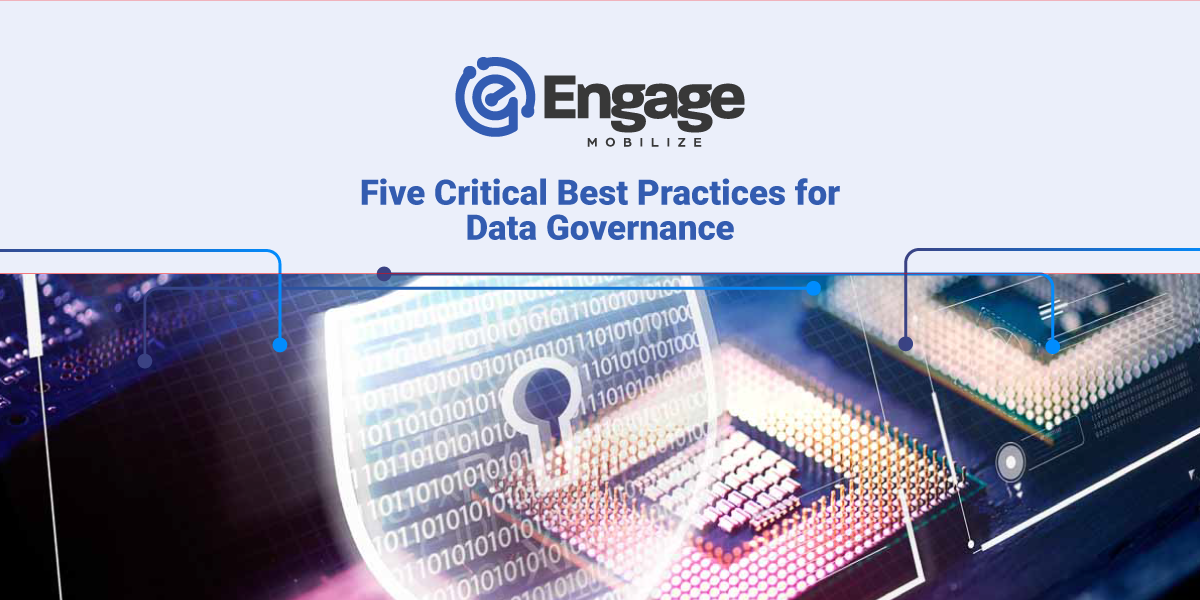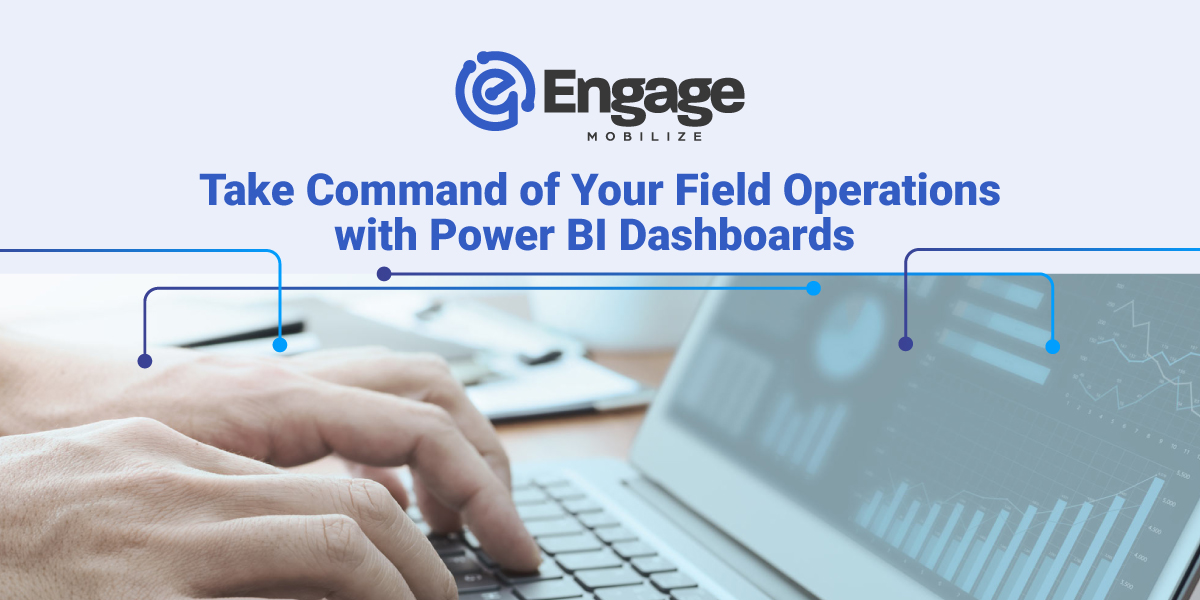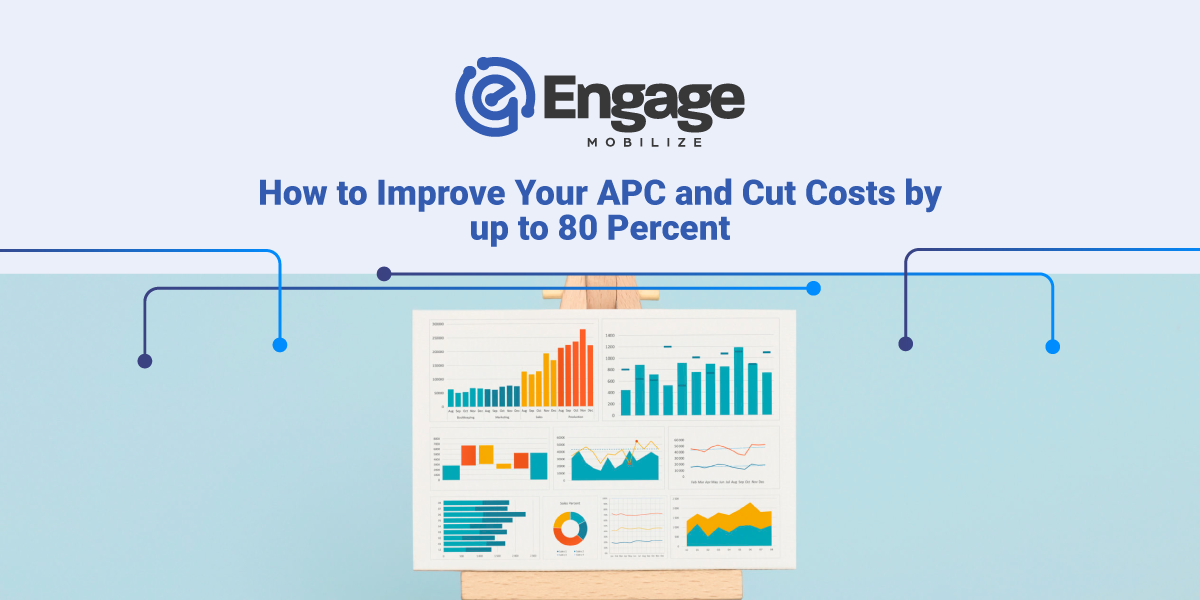Five Critical Best Practices for Data Governance

One of the top benefits of leveraging technology to manage your business is the data. Data provides business intelligence that allows for auditing, reporting, and ultimately, lends itself to increasing efficiency and lowering risk.
In order for data to be meaningful, companies should create an actionable, measurable data management policy.
A data governance policy should cover how data is gathered, where it’s stored, and how it’s used. Data security should also be prioritized throughout the entire lifecycle of its existence from capture to disposal. Robust data strategies should encompass the people, processes, and technology used to maintain it.
Here are five critical data governance best practices to consider for your organization:
1) Establish Your Data Governance Architecture
How data is structured and accessed forms the heart of data governance. It describes how your data is gathered, where it’s stored, why it’s needed, who has access and why.
Data architecture also provides an overview of the changes data undergoes as it proceeds from point A to point B.
This helps stakeholders within a particular data chain understand your data landscape and how information moves through your organization.
2) Protect Data Quality
Information – and the decisions that result – are only as good as the quality of the data. According to research conducted by Gartner, 42% of business leaders fail to assess, measure, or monitor the quality and validity of the information at their disposal. It remains in huge “data lakes” where its potential goes unrealized.
Automation, in conjunction with an effective data governance program, helps to alleviate this issue by analyzing and organizing data by type, checking for errors and inaccuracies, detecting when data is corrupt or out of date, and archiving or purging data according to its timeliness or relevance. Information can be further refined by matching key terms with information assets.
3) Create a Procedure for Data Management
Now that you have all of this information cleaned up and available, how will you store and use it? Effective data management covers how you will store, protect, and use the data in your possession. It’s the point where you put your data strategy into action.
For example, automation puts a lot of information in cloud storage by default. However, sensitive data, such as accounts, procedures, and customer information, are sometimes at risk. With a data management protocol in place, you can determine what information resides in the virtual realm, what is stored where , and who has access to information.
Typical frameworks include:
Establishing Role-Based Access Rules
- Implementing database rules according to your data governance mission and policies
- Creating and maintaining rules and policies for data security in accordance with industry and government regulations and best practices for compliance
- Determining policies and procedures to minimize risk and preserve data integrity
- Creating a centralized system for data management that provides enterprise-wide access to a single, standardized view
4) Acquire the Right Software Platforms and Tools
Your automation should help seamlessly and efficiently manage the entire data lifecycle. Tech products should support your data governance strategy, but they should also be intuitive enough to offer recommendations for improvement. The solutions you choose should be in line with company goals based on careful evaluation and planning as well as consistent in guidelines, formats, and processes.
Advances like platform integration streamline data collection via a seamless pipeline that starts at the invoice and flows to every relevant department and supports every business function.
5) Prioritize Data Security at Every Level
Any form of networked technology is vulnerable to cyber security risks from malware, ransomware, and data breaches. These exploits can cost companies billions of dollars in lost revenue and downtime, not to mention the damage to your reputation.
The security and integrity of your data should be your number one priority. This can be accomplished by building security into your architecture. That includes siloed legacy data of uncertain origin or date. The goal is to make data traceable so that you know its origin, who has access, how it is used or transformed in-transit and at rest, and how it is disposed. Your policy should also inform customers, partners, and vendors about your practices and how their information is affected.
Once your policies and procedures are in place, you need to choose reliable software vendors whose data management and security policies are aligned with your own.
Final Thoughts
Data-driven decisions are the foundation of every profitable company. When you’re ready to change the way your company handles financial transactions, Engage Mobilize has a secure solution that fits the needs of industrial enterprises like yours. From electronic invoicing to fully-integrated product suites, our mission is to drive innovation and sustainability in the energy sector.
Arranging a consultation is as easy as calling (720) 575-6695 You can also drop us an email at Sales@engage-m.com or contact our field automation experts online.
Are you ready to learn more?
We’re ready to talk to you about the specific cost savings, workflow efficiencies and data insights that come from taking your field operations digital.
Share this
Similar Stories

Visualizing Success: Gaining Insight over Field Operations with the Engage Mobilize Power BI Dashboard

How to Improve Your APC and Cut Costs by up to 80 Percent
